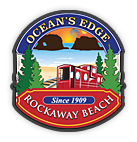Making Memories for more than 100 years
On July 3-5, we’re celebrating 105 years
Before the jetties were built in the early 1900s, there was a wide, sandy beach all the way from Garibaldi to Nehalem Bay. This beach served as the only access to the area, which was then known as Garibaldi Beaches. The area remained nearly isolated to all but a few hearty souls who would drive up the beach by horse and wagon or walk during low tide.
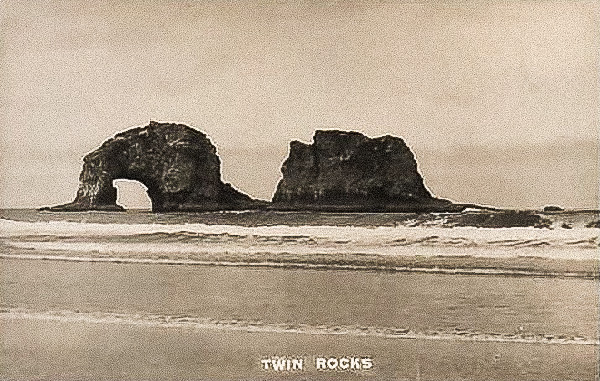
After several unsuccessful plans for a railroad line from Portland to Tillamook, the Pacific Railway and Navigation Co., promoted by Elmer E. Lytle, opened in Hillsboro in 1906, and the first steam engine was delivered to Tillamook around 1907. The coastal land homestead claims, once considered nearly worthless, took on new value, and a flurry of subdividing land into townsites began in 1909.
Today you will find The Little Red Caboose that serves as The Rockaway Beach Chamber of Commerce office set up at the Wayside as a tribute to these beginnings.
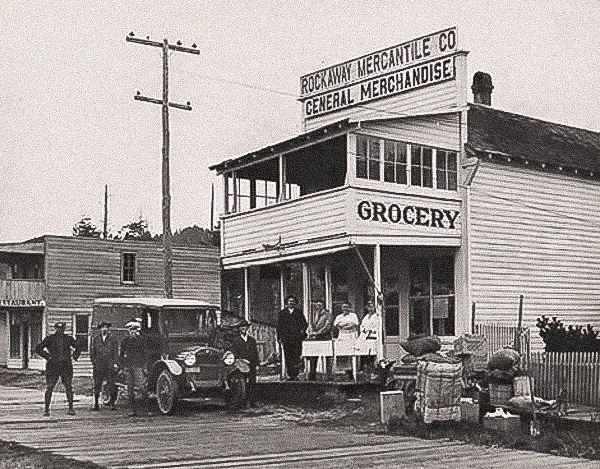
The city limits of Rockaway Beach now encompass the subdivisions or townsites from north to south named Manhattan, Highland Park Addition to Manhattan, Moroney Town, Lake Lytle, Beal’s Addition to Lake Lytle, Seaview Park, Rockaway Beach, Elmore Park, Tillamook Beach (known as Saltair), Midway Beach, Twin Rocks, and a small portion of Ocean Lake Park. Information about these developments was gleaned from old abstracts, plat filings and records, as well as the stories of the early settlers and “summer people.”
Around 1910, the Pacific Railway and Navigation line ran flatcars as far as Salmonberry, and the first train from Portland arrived in Tillamook in October 1911. The railroad was the vital force in the development of the Rockaway area.
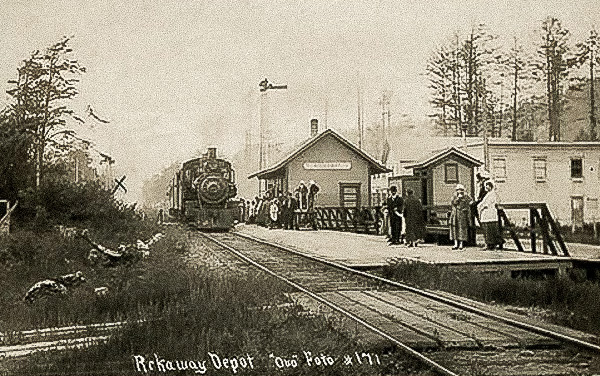
In the teens and 1920s, the train from Portland was the main mode of transportation to the coastal communities. It was an all-day, dusty trip to the coast by car over gravel and plank roads, so the steam trains began to play an important transportation role. The train left Portland around 9 a.m. and arrived in the Rockaway area about 2:30 p.m. An extra engine was used to help it over the summit of the Oregon Coast Range.
The first passenger train came to Rockaway in 1912. At the beach resorts, it was a happy occasion when the Friday afternoon train arrived, bringing the dads who were joining their families for the weekend, thus earning the name “Daddy-Train.”
Shipwrecked Emily G. Reed
The Emily G. Reed, an American sailing vessel bound for Portland, Oregon, and103 days out of Newcastle, New South Wales, carried a cargo of 2,110 tons of high-grade Australian coal. The ship lost its bearings and hit a sandbar on the Garibaldi beach (now known as Rockaway Beach) two miles south of the entrance to Nehalem Bay at 1:30 a.m. on Friday, Feb. 18, 1908, in a cold, fog-soaked rain. (Note: The Feb. 18 date appears to be a typo since Friday fell on Feb. 14 that year, the date the ship ran aground.) It was an old wooden ship and soon was prey to the heavy pounding of the surf.
The crew was helpless, and those able to make it to shore were scantily clad and suffered untold hardships from exposure until assistance was given by the people who lived along the almost-uninhabited stretch of beach. Seven men (some accounts say eight) lost their lives in this wreck.
The captain, his wife, (the only woman aboard) and four of the crew, not knowing where they were in the early morning darkness, decided to chance swimming ashore with a rope tied to the wreckage should they not make land, only to find jumping overboard that their feet touched the bottom and they could walk ashore.
The strangest story of this disaster was that of four men, including the ship’s cook, who easily could have waded ashore had they known. Instead, they got in a lifeboat and were carried far out to sea. Drifting for days, they were exposed to the open sea without food or water. The cook died and the other three, in a weakened condition, landed at Neah Bay in the Straits of Juan de Fuca, Wash., more than 200 miles north of the wreck.
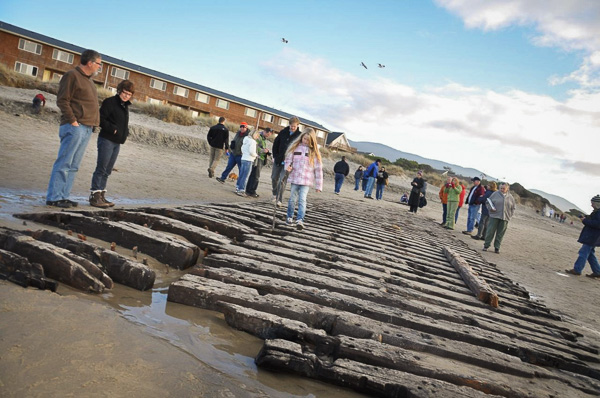
The Emily G. Reed was built in 1880 at Waldoboro, Maine. It was a full-rigged wooden sailing schooner, 215 feet long, with a breadth of 40.6 feet, a hold depth of 24.1 feet, and a registered weight of 1,564 tons.
The Emily G. Reed was constructed to last many years. The hull was built to keep worms from boring holes in the wood planking. With pine planks inside and out and oak knees and ribs, copper, iron and wooden pins were used to hold the planking on. Copper pins were 25 to 27 inches long, tapered from 1 inch to three-quarters of an inch, with copper washers on each end. The oak pins were the same length with oak wedges on each end to spread the wood pin tight. The copper and iron pins were wedged to keep the washers on.
The entire hull, from waterline down to the keel, was covered with sheet copper held in place with 1-inch copper nails. There were from 90 to 100 nails in a section of plank 9 inches wide by 1 foot long, and there were copper nails one-half inch by 8 inches in the planks.
Unlike many of the old-time sailing ships that came to a watery grave to be swallowed up forever by shifting sands and soon forgotten, the Emily G. Reed saw its sailing days come to an end on the shores of Garibaldi Beach where it soon disappeared, but is not forgotten. Here, the ship left a cargo of coal to be distributed along the beach through the years at the will of the waves. The angry ocean, stirred into fury by the wintry Southwest gales, has chosen from time to time to uncover and bring back parts of the hull as a reminder of the part this proud old ship once played in sailing the seven seas.
Pronto Pup
The Pronto Pup was invented in Rockaway Beach in the late 1930s by the husband and wife team of George and Versa Boyington. The Boyingtons ran a small hot dog stand on the beach, selling to tourists and locals alike. When the rain came and ruined the buns making them soggy and inedible, George Boyington came up with the idea of cooking a bun as needed. He created a pancake batter-based mix and the duo came up with the formula used today.

Flights ground to halt
After the end of World War I in 1918, a popular pastime in Rockaway Beach was to take a joyride in a warbird. The biplane pilots would use the sand on Rockaway Beach as a landing strip and sell tickets to passengers wanting to experience the thrill of flight. This went on until one day a plane struck a nun walking on the beach. It’s not known if the nun survived, but the plane rides ceased immediately after the incident.
